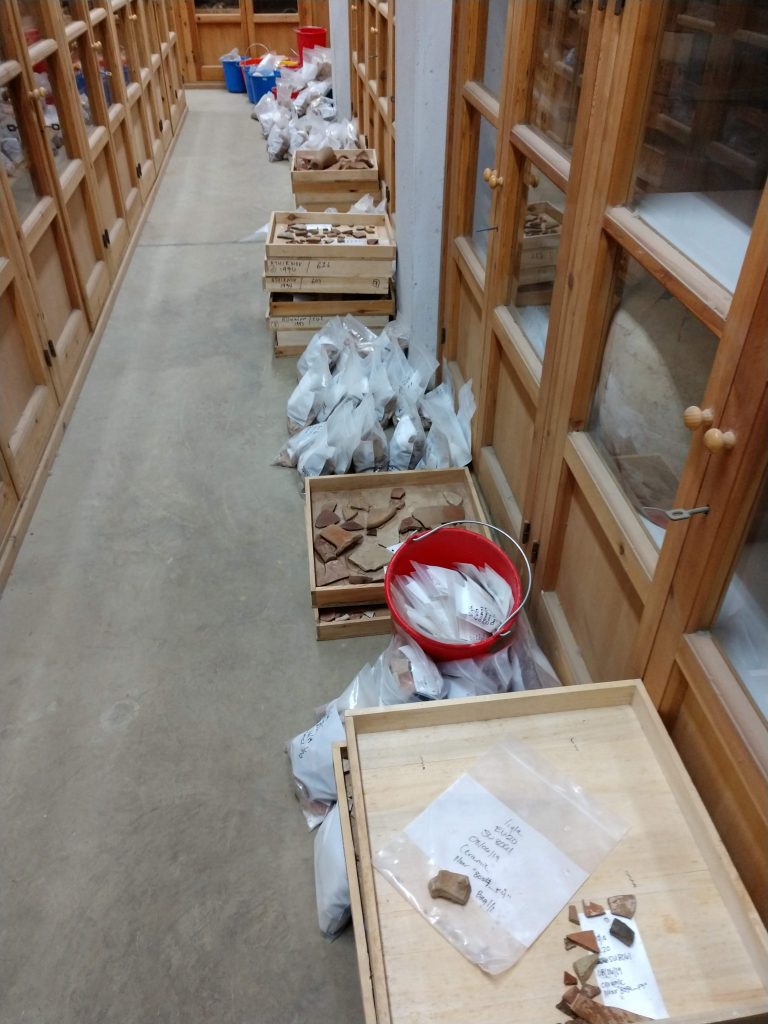Thursday and Monday were shooting days, so we spent Thursday exploring the many archaeological sites in the region of Paphos and Monday washing pottery.
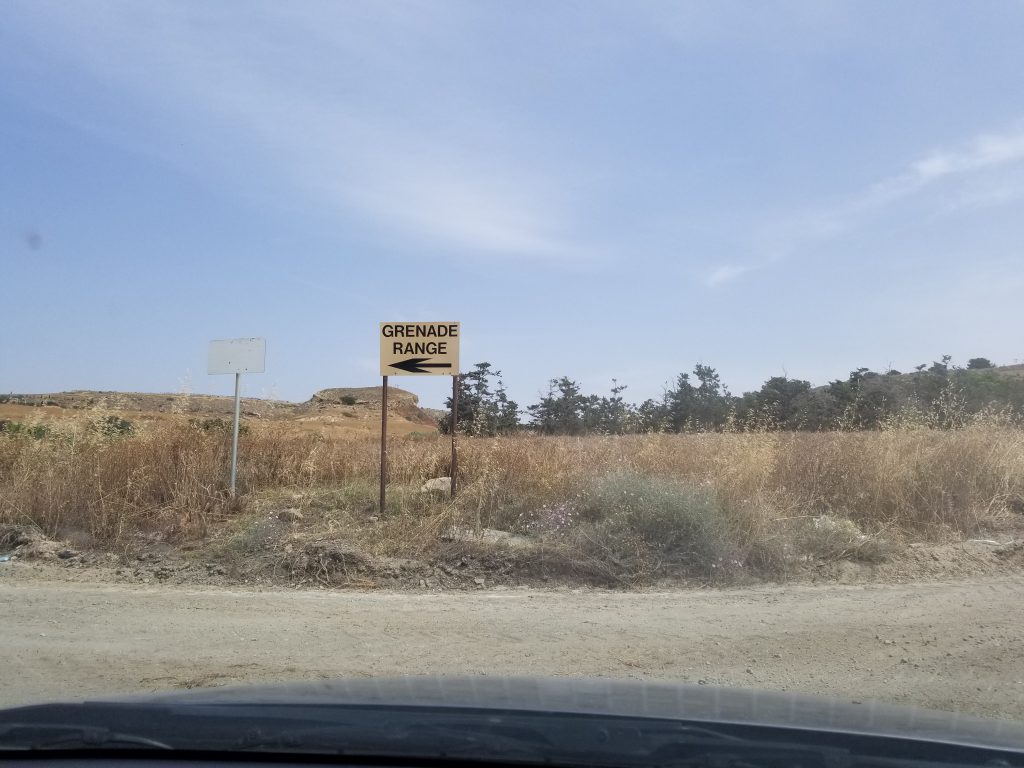
Paphos, located in the western part of Cyprus, is one of the major cities on modern Cyprus and is a major tourist destination. It also has some of the best archaeological remains on the island. Paphos was one of the most important city-kingdoms during the Iron Age (c. 1050-475 BCE) and was the main center for the cult of Aphrodite. During the Hellenistic period (323-58 BCE), Paphos was the capital of the island under Ptolemaic rule and continued to be the principal city of the island under the Romans until the late fourth century CE.
Our first stop was the Tombs of the Kings, which, despite the name, were not, in fact, intended for any type of royalty. They are Hellenistic-era tombs cut into the limestone bedrock overlooking the sea and are of a type that bear strong similarities to monumental tombs in Alexandria. The tombs were communal and held many burials.
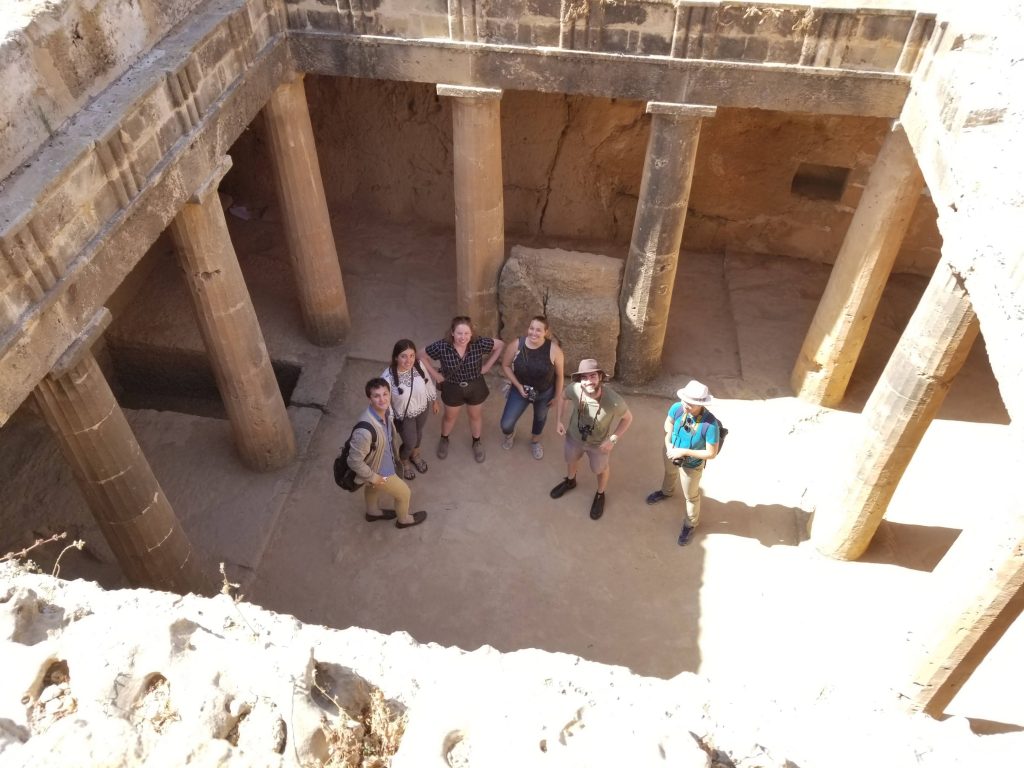
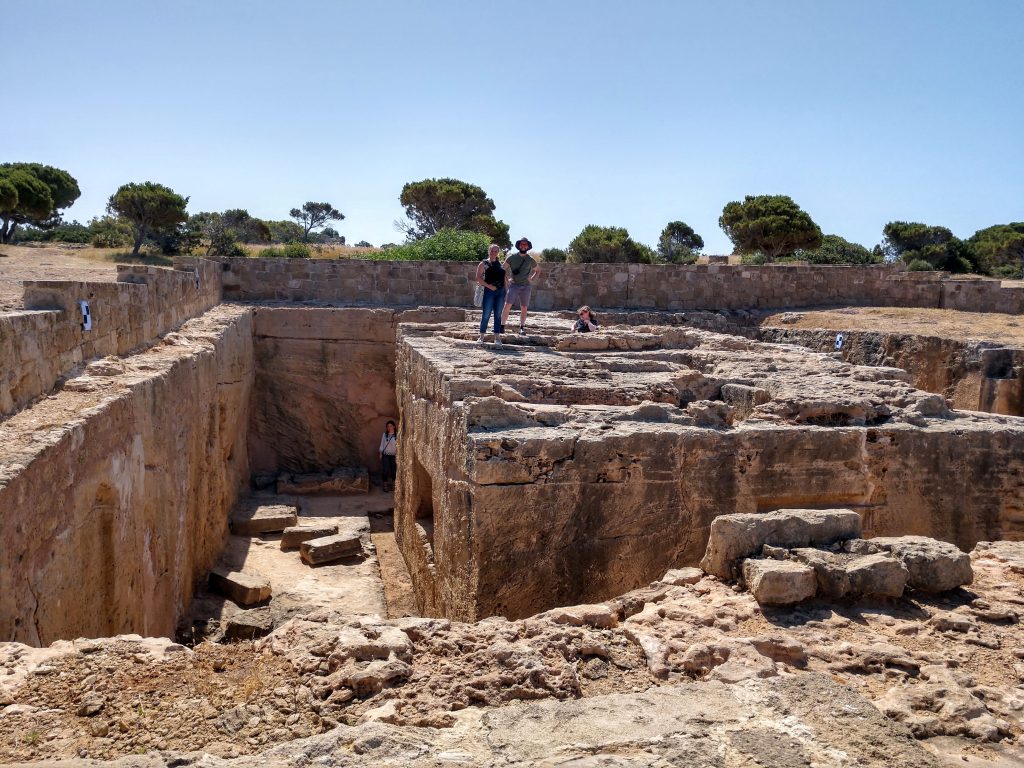
The site of Nea Paphos, or new Paphos, is located in the center of the modern city. Nea Paphos was founded in the fourth century BCE as a new city, replacing the original Bronze- and Iron-Age settlement, known as Palaipaphos, or old Paphos, which is further east and inland.
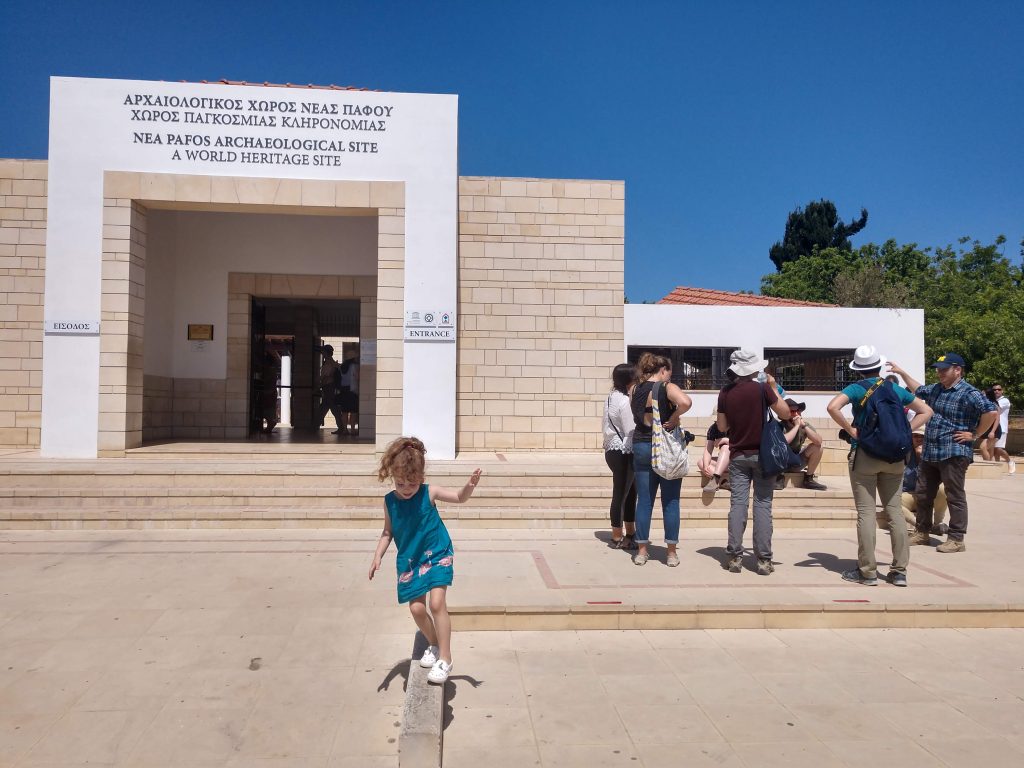
Nea Paphos is principally known for its Roman-period remains, especially the mosaic floors that would have decorated the houses of the wealthy.


We also visited the agora and reconstructed odeon, as well as a medieval castle known as Saranta Kolones, or Forty Columns, since it was built using a large number of reused architectural elements, or spolia, from the Roman city.
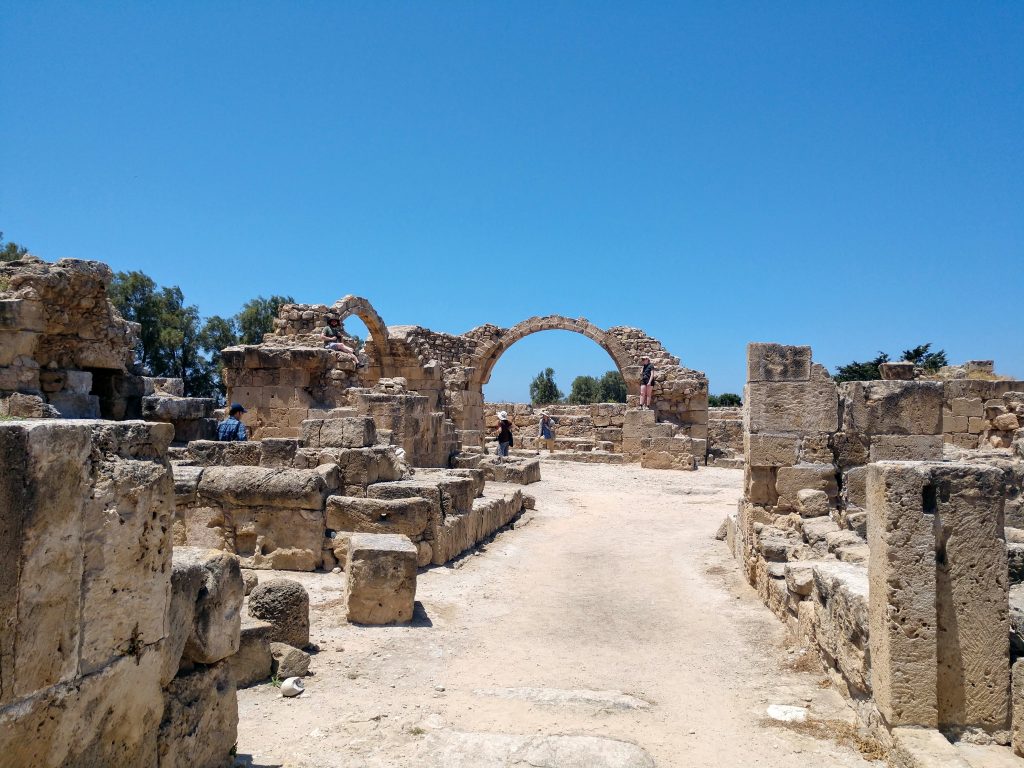
Our last stop was the site of Palaipaphos in the village of Kouklia. Even after the city of Nea Paphos was founded, Palaipaphos remained the center of the cult of Aphrodite on Cyprus. The site consists mostly of the remains of the Late-Bronze-Age (c 1500-1200 BCE) and Roman-period (c 58-330 CE) temples of Aphrodite.

The museum on site, located in a medieval sugarcane refinery, features artifacts found in excavations at the site, including Greek inscriptions written in the Cypriot syllabic script, which is related to Linear A. Most importantly, the museum is home to Aphrodite herself, in the form of a conical black rock. Known as beatyls, a word that derives, via Latin, from a Semitic root meaning house of god, these aniconic representations of deities are common in West Asia and on Cyprus.
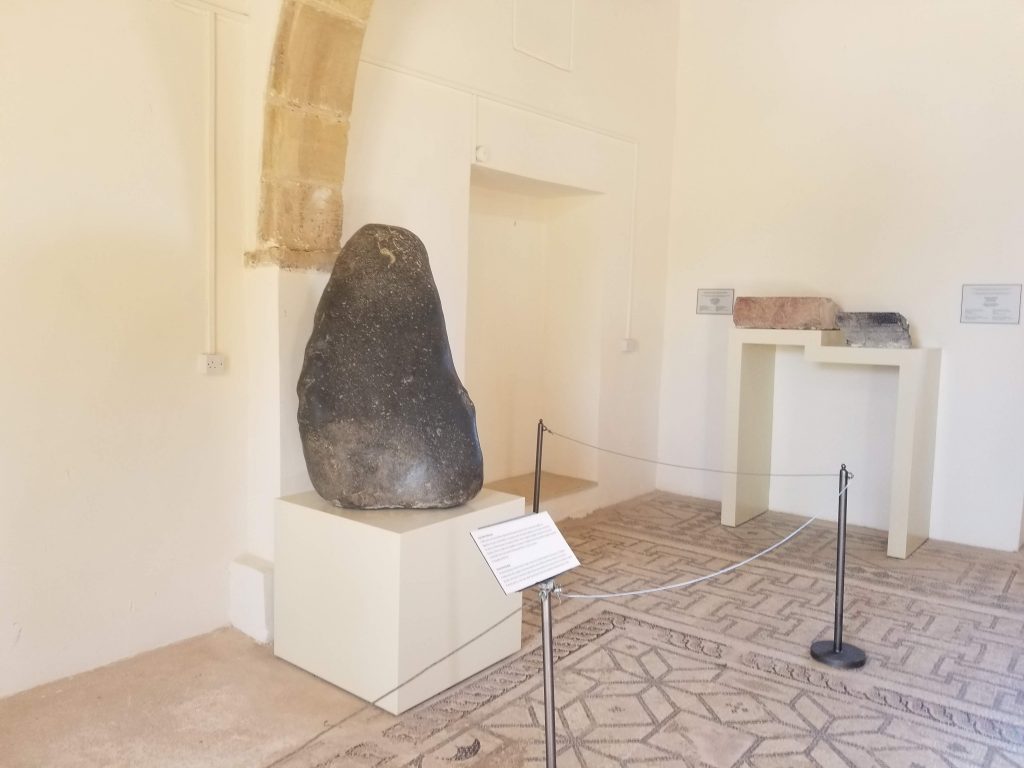
Thanks to a very friendly antiquities department archaeologist and guard at the museum, who directed us to a fenced-off area down the road from the main archaeological site, we were also able to visit the remains of a siege ramp dating to the Persian siege of Paphos during the Ionian Revolt (498 BCE).

Another shooting day on Monday gave us to chance to savor one of the many joys of archaeology: pottery washing. Despite what you may have seen in popular representations of archaeology, the vast majority of finds are broken pieces of pottery, all of which need to be cleaned, weighed, identified, and sorted.
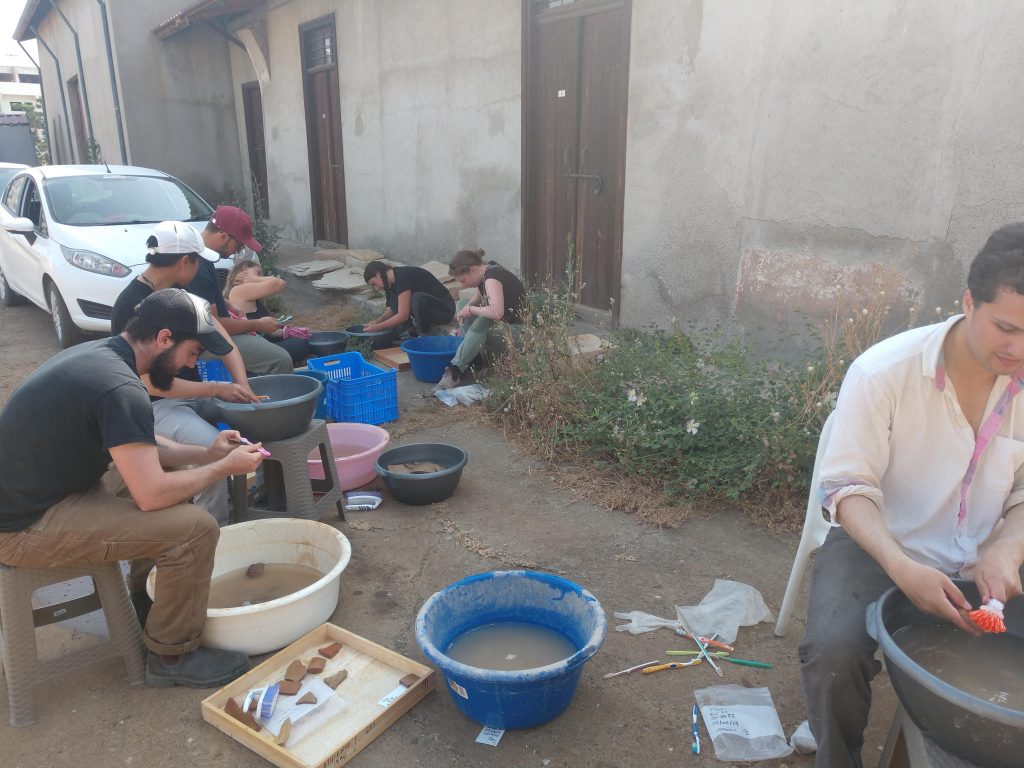
The pottery of the ancient Mediterranean has been scientifically studied for decades, and therefore we know when specific styles of pottery were created and were popular. Therefore, the pottery remains of any given stratigraphic unit can help to date it. The goal of this careful treatment of pottery is to identify the latest datable material, which provides a terminus post quem for the human activity that created that stratigraphic unit; for example, a pit would have to have been dug and filled at some point after the last datable piece of pottery found in the unit was created. In dealing with floor contexts, which occur in the middle trench of this season’s excavations, washing and identifying all the pottery is necessary for understanding assemblages of pottery, or pottery that was all used at the same time and in the same place in the past. This can tell us about the use of the space.
